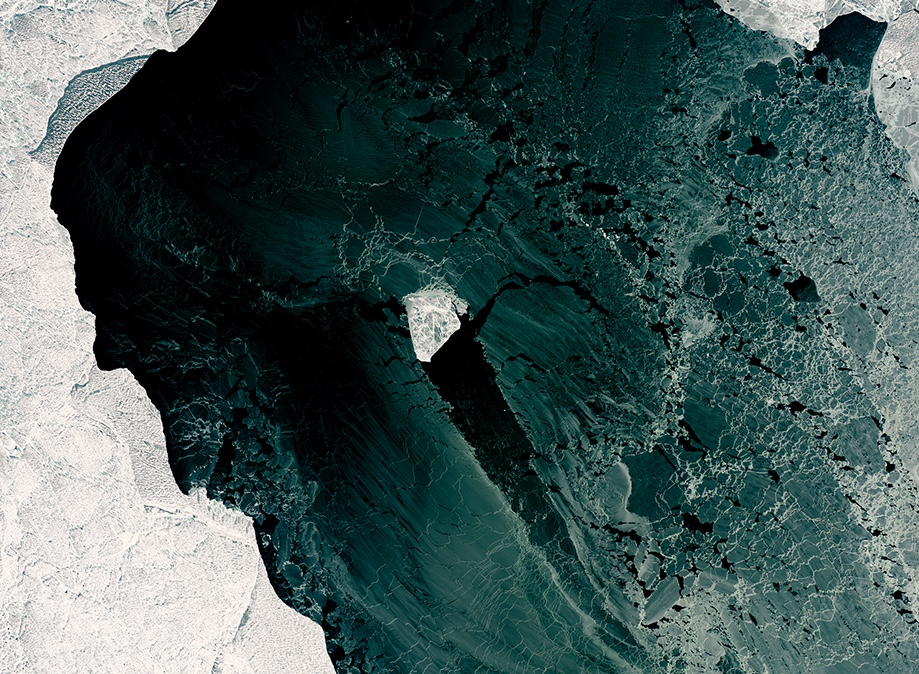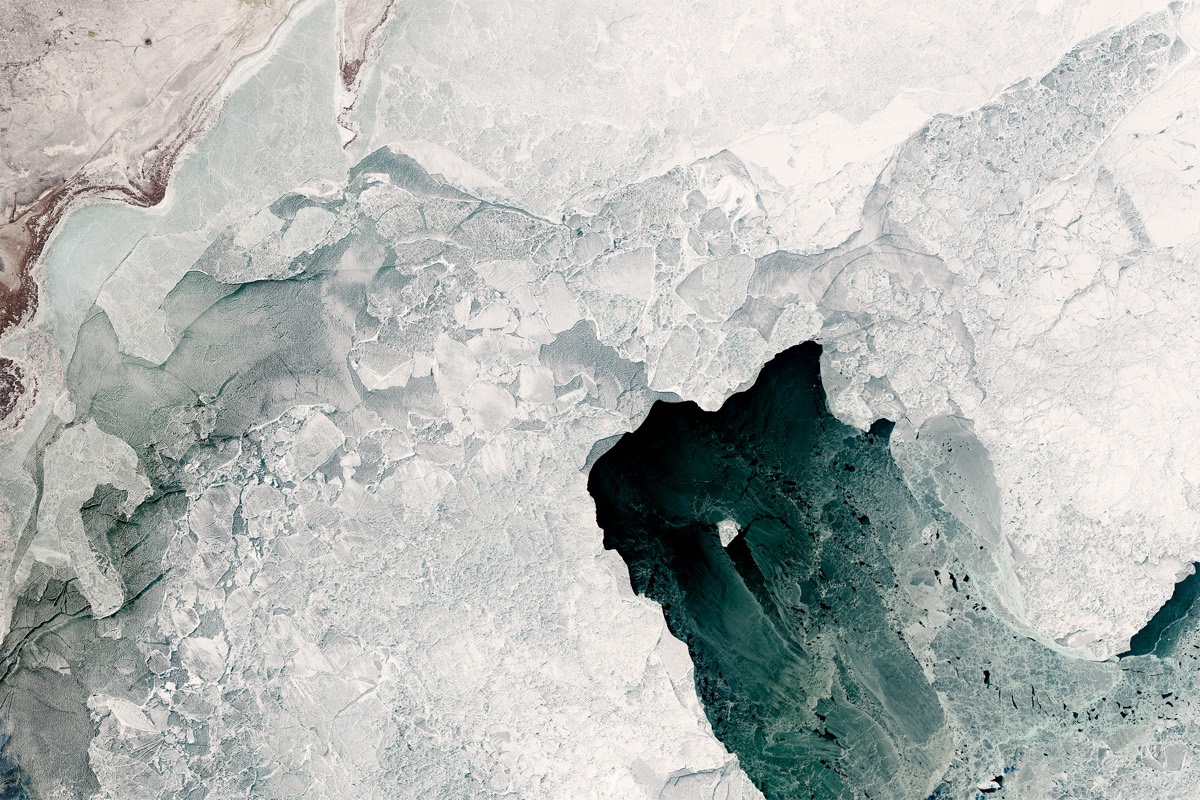Floating Ice Diamond Dazzles from Space

A diamond-shaped chunk of ice stands out against the brilliant blue of the winter Caspian Sea in a new NASA image.
The image, taken by Landsat 8's Operational Land Imager, shows the Caspian Sea, separated by a shelf of sea ice from the Volga Delta. The delta — Europe's largest inland river delta — is visible as snow-dusted sediment in the upper left of the image.
According to NASA's Earth Observatory, which published the image, the northern part of the Caspian Sea is less saline and shallower than the southern part. Combined with the lower temperatures at higher latitudes, these features make the northern Caspian more prone to freezing than the southern reaches of the sea.
The bright white diamond-shaped chunk of ice likely detached from the sea ice nearby, Alexei Kouraev, a scientist with theLaboratory of Geophysical Studies and Satellite Oceanography in France,, told the Earth Observatory. It sits in an expanse of thin ice called "nilas," which is defined as a crust of ice less than 4 inches (10 centimeters) thick. Winds and currents push the nilas around the diamond block, Kouraev said, creating a tail of open water behind it.

The Caspian is the largest inland body of water in the world, and its shores have been occupied for tens of thousands of years. Azerbaijan's Gobustan State Reserve, on the sea's eastern side, is home to more than 6,000 rock-art drawings that span 40,000 years of history, according to the United Nations Educational, Scientific and Cultural Organization (UNESCO). The images depict pregnant women, hunters and numerous animals. Archaeologists have also found a 1,500-year-old stone complex, complete with carved slabs, on the Caspian's eastern shore.
Ice has left its mark in the Caspian, too. In April 2016, another image from the Landsat 8 satellite showed extensive scratches all over the floor of the northern Caspian. In shallow water, ice gets sculpted by wind into lumps called hummocks. The jagged bottoms of these hummocks can reach to the seafloor, where they carve out gouges as they are pushed around by wind and water.
Original article on Live Science.
Sign up for the Live Science daily newsletter now
Get the world’s most fascinating discoveries delivered straight to your inbox.

Stephanie Pappas is a contributing writer for Live Science, covering topics ranging from geoscience to archaeology to the human brain and behavior. She was previously a senior writer for Live Science but is now a freelancer based in Denver, Colorado, and regularly contributes to Scientific American and The Monitor, the monthly magazine of the American Psychological Association. Stephanie received a bachelor's degree in psychology from the University of South Carolina and a graduate certificate in science communication from the University of California, Santa Cruz.









